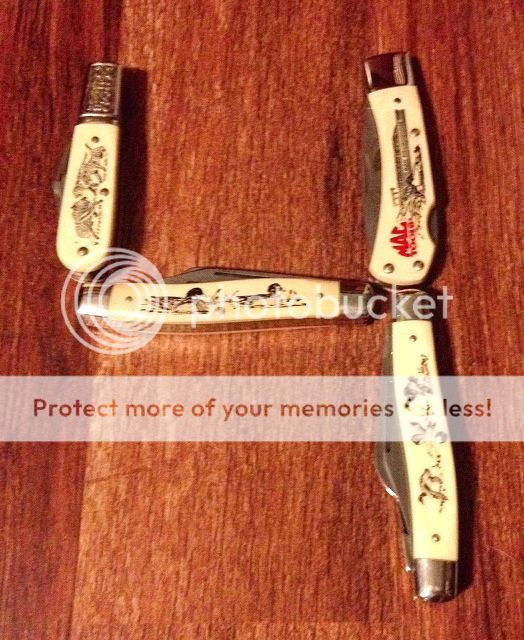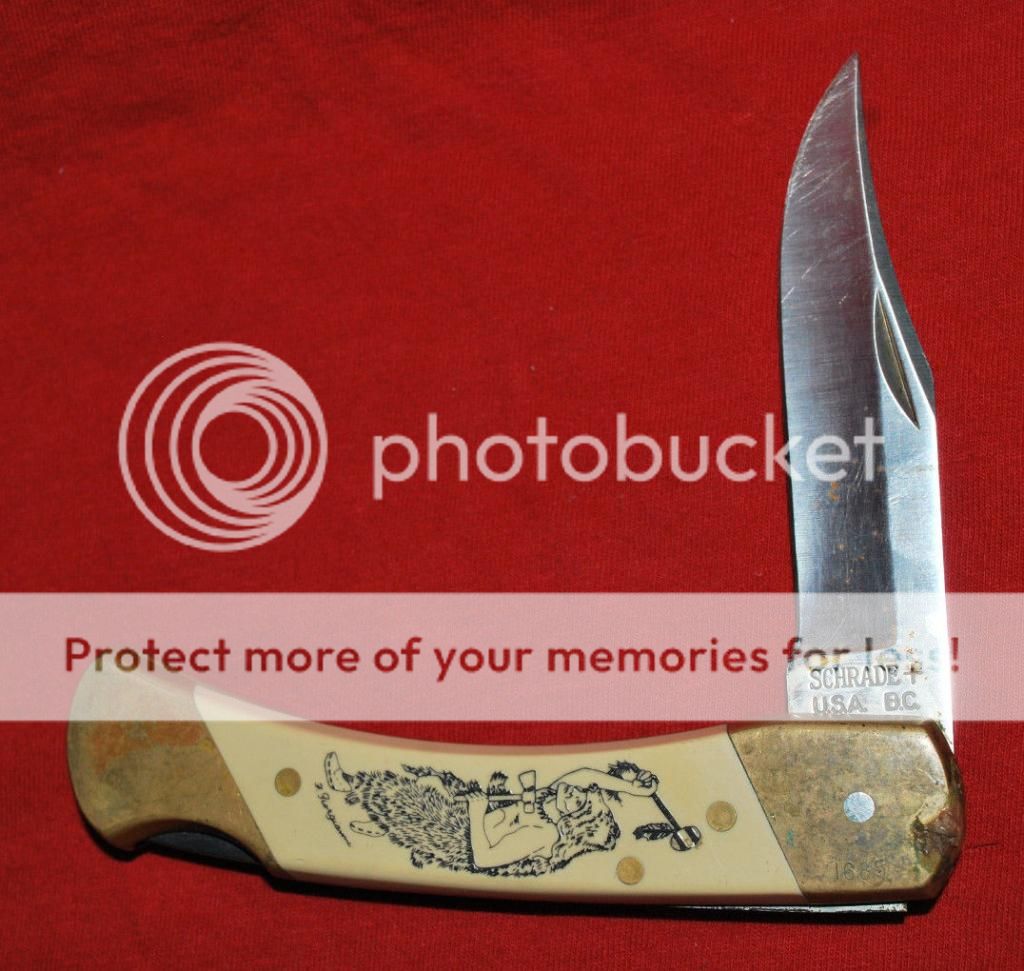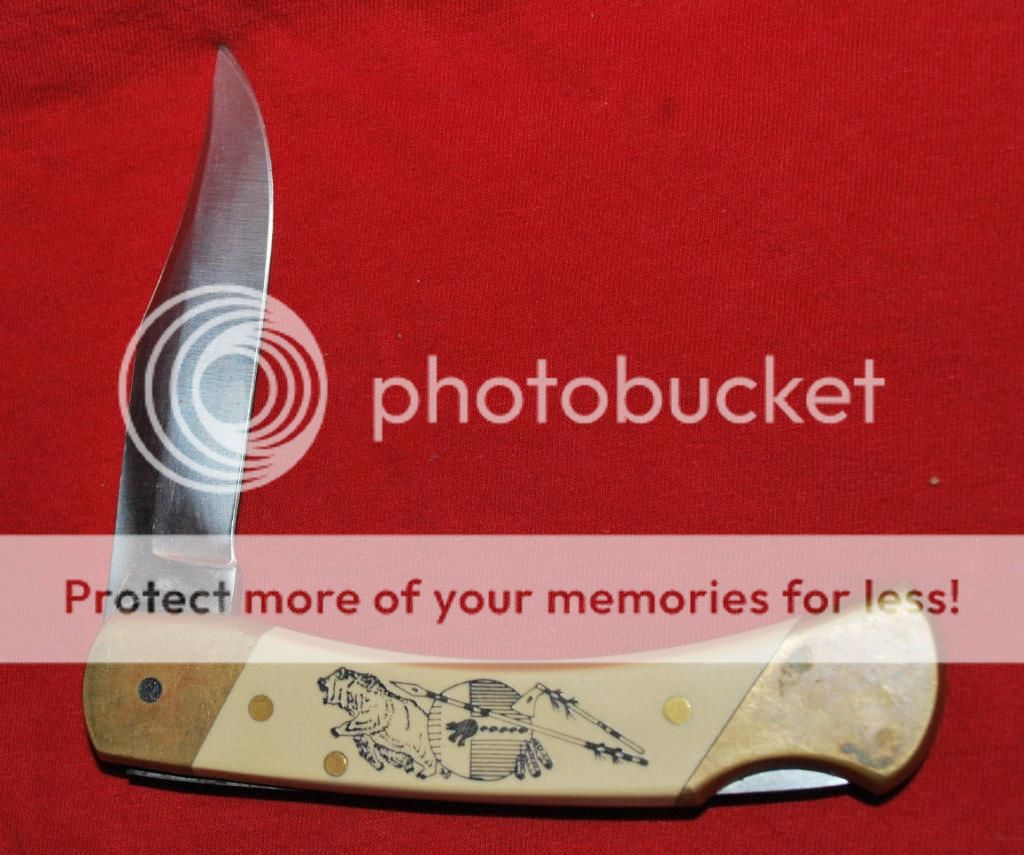-
The BladeForums.com 2024 Traditional Knife is ready to order! See this thread for details: https://www.bladeforums.com/threads/bladeforums-2024-traditional-knife.2003187/
Price is$300$250 ea (shipped within CONUS). If you live outside the US, I will contact you after your order for extra shipping charges.
Order here: https://www.bladeforums.com/help/2024-traditional/ - Order as many as you like, we have plenty.
You are using an out of date browser. It may not display this or other websites correctly.
You should upgrade or use an alternative browser.
You should upgrade or use an alternative browser.
Show Your Vintage Schrade Scrimshaw Designs by F. Giorgianni
- Thread starter edbeau
- Start date
- Joined
- Jun 16, 2014
- Messages
- 164
Beautiful knife and a great find Rusty1
- Joined
- Jun 16, 2014
- Messages
- 164
This knife sure does look familiar...lol Thanks for the help edbeau.
thanks that is what i thought it looked like but wasn't sure. i didn't turn the laptop completely upside down.
The Mayflower was the ship that transported mostly English Puritans and Separatists, collectively known today as the Pilgrims, from Plymouth England to the New World. There were 102 passengers and the crew is estimated to be approximately 30 but the exact number is unknown.
This voyage has become an iconic story in the earliest annals of American history with its tragic story of death and of survival in the harshest New World winter environment. The culmination of the voyage in the signing of the Mayflower Compact is one of the greatest moments in the story of America, providing the basis of the nation's present form of democratic self-government and fundamental freedoms.
- Joined
- Jun 16, 2014
- Messages
- 164
- Joined
- Jun 16, 2014
- Messages
- 164
Thanks for the tip! They reside in the display boxes in a cool dry place, after being wiped down with a dry rag. I recently turned away from a nice Schrade Walden 285UH in a brown hinged box because the photos revealed a rusty looking finger print that I didn't think I could polish out completely. I believe it was itched into the nickel bolster.
Codger_64
Moderator
- Joined
- Oct 8, 2004
- Messages
- 62,324
"The Eagle" was a specia lfactory order by the Tharpe Corporation. The pinecones were their logo. I guess they were event enhancement knives given as service awards to employees, or given to valued customers. Here is another one from Tharpe.


The art on this one however was rendered by J. Duffey, Giorgianni's sucessor (circa 1991?)


The art on this one however was rendered by J. Duffey, Giorgianni's sucessor (circa 1991?)
Codger_64
Moderator
- Joined
- Oct 8, 2004
- Messages
- 62,324
I find the process and history of the scrimshaws interesting. Original art was produced in larger sizes and then reduced greatly for the imprinting dies. Too much detail or too thin lines produced less than satisfactory results when reduced to the size needed to fit the "canvas" of the knife scales. I am sure that it took a bit of experience and a keen eye to get it right. Interesting also that other cutleries made attempts to do the same thing but didn't meet with the long running market success that Schrade did with their art knives. All in all a pretty good run for something that evolved from advertising at of company logos and such. One can trace the evolution somewhat by looking at the "Office Knife" imprints over the previous decades as well as rope knives and fruit/sausage sampler knives.
I find the process and history of the scrimshaws interesting. Original art was produced in larger sizes and then reduced greatly for the imprinting dies. Too much detail or too thin lines produced less than satisfactory results when reduced to the size needed to fit the "canvas" of the knife scales. I am sure that it took a bit of experience and a keen eye to get it right. Interesting also that other cutleries made attempts to do the same thing but didn't meet with the long running market success that Schrade did with their art knives. All in all a pretty good run for something that evolved from advertising at of company logos and such. One can trace the evolution somewhat by looking at the "Office Knife" imprints over the previous decades as well as rope knives and fruit/sausage sampler knives.
Very interesting train of thought and informative. Staying with that line of thinking, these would then be the "Neanderthals" of the evolutionary chain of scrimshaw knives. (borrowed picture)

Last edited:

























